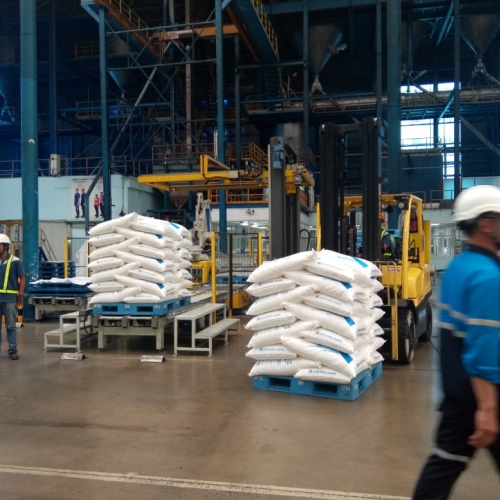Rome [Italy], June 4 (ANI): Global food commodity prices fell for the fourth consecutive month in May as coronavirus (COVID-19) epidemic caused the economic crunch, leading the market to reflect strong supply and weak demand situation, the United Nations food agency said on Thursday.
The Food and Agriculture Organisation (FAO) food price index is used to track monthly changes in international prices of daily-trading food commodities. It averaged 162.5 points in May, a decrease of 1.9 per cent from the previous month and the lowest point since December 2018.
The dairy index fell by 7.3 per cent from April and by an average of 19.6 per cent from the same period last year. The main reason was that the price of butter and cheese fell sharply due to seasonal supply factors and lower import demand.
The price of milk powder has only declined slightly because of the low prices and the revival of economic activity in China, which has stimulated strong buying intentions.
The sugar price index rose against the trend, up 7.4 per cent from last month, and recovered half of the decline in April. This was due to the rebound in international crude oil prices coupled with India — the world’s second-largest sugar producer and the second-largest sugar exporter.
The cereal price index fell 1 per cent from April. Driven by rising quotations for japonica rice and basmati rice, international rice prices rose slightly, while wheat supplies fell in anticipation of sufficient global supply. As US corn prices fell nearly 16 per cent from May 2019, coarse grain prices fell further.
The vegetable oil price index fell 2.8 per cent, reaching its lowest point in 10 months. Despite rising quotations for rapeseed oil and sunflower oil, palm oil quotations have fallen for the fourth consecutive month, reflecting weak global import demand and higher-than-expected production and stock levels in major exporting countries.
The emat price index fell 0.8 per cent in May, an average decrease of 3.6 per cent from May 2019. Beef quotations have risen, while poultry and pork quotations have continued to fall, as export supplies from major producer countries are at a high level, although East Asia’s import demand has increased after the new crown epidemic’s social alienation measures were relaxed.
The FAO Cereal Supply and Demand Bulletin also released today shows that global cereal production is expected to reach a record 2.78 billion tonnes, an increase of 2.6 per cent from 2019-20.
The FAO predicts that the global cereal trade volume will increase by 2.2 per cent in 2020-21, setting a new record of 433 million tonnes. The trade volume of all major grains is expected to increase, among which the global rice trade is expected to increase the most, reaching 6.2 per cent. (ANI)
To Listen to this News click on the play button.













